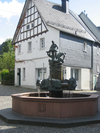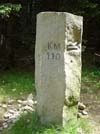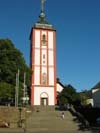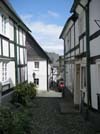Wittgenstein Palace
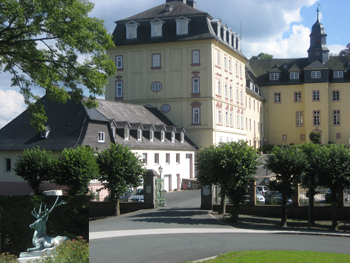
A castle was first mentioned as 'Widenkindigstein' in 1187. With this castle, house Battenberg secured its influence in the Wittgensteiner land at the upper Lahn river. In the year 1190, Earl Werner I von Battenberg and Wittgenstein signed a contract with the archbishop of Mainz, Konrad I von Wittelsbach, according to the contract, he would instruct the monastery to preserve the Wittgenstein Castle as a fief against money payment. But the archbishop didn't pay up in full and thus the contract didn't come into effect and Werner was able to free himself of the related dependence from Mainz some years later. Only a contract with Werner's sons Werner II, Widekind I and Hermann, from the 2nd of September 1223, made it possible for the new archbishop Siegfried II to get Wittgenstein Castle for the monastery.
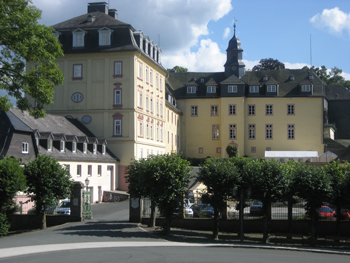
In the year 1238, followed the separation of the house Battenberg in a Battenberg and a Wittgenstein line by the sons Widekind's I. the Wittgenstein Castle and the town Laasphe came to Siegfried I, who called himself Earl of Wittgenstein now. With the decline of the earls of Wittgenstein in the male line, the castle came to the house Sayn-Wittgenstein in 1359. During the Thirty Year War, the palace was being seized in 1634 and heavily damaged but rebuilt. It was the residence of the counts of Sayn-Wittgenstein-Hohenstein until 1950.
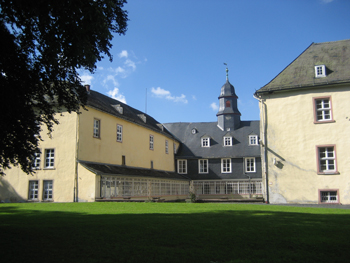
After the counts moved into the Schwarzenau Palace, the dormitory of a boarding school was set up in the palace. During the 1960ties, it was turned into the Gymnasium ( grammar school) Schloss Wittgenstein. By the, many rooms were turned into class rooms and regular school lessons take place. To provide for the all-day students, the existing boarding school kitchen and the dining hall were renovated in 2009.
The irregular triple-wing facility of the palace stretches over a length of roughly 125 metres. The facility was built in several construction phases and doesn't show any uniformed architecture. The building shows mostly Renaissance and Baroque styles.
The palace's north wing (or centre building) stems from the end of the 16th-century. The foundations of a square tower were dug up in the west part, whereby one assumes that this is being contributed to the original castle from the 12th-century.
On both sides of the north wing, the west wing (or kitchen wing) and the east wing (chamber wing) to be found. These were originally independent buildings, which were connected to the north wing at the beginning of the 18th-century. The striking four-floor pavilion at the east wing was built in 1783.
The palace's stable stem from the year 1736, the other utility buildings are more recent.
Little known is the fact, that the palace was built on a rock, which has an important meaning for the naming of the region Wittgenstein. Today, the 'Widukind'-rock protrudes still untreated and raw into one of the glass corridors, which encloses the inner 'rose garden'. Inside the palace used to be the princely archive, which stored historical documents from past centuries, mostly starting from the 17th-century. After the transfer of ownership, this archive was moved to a building of the exchequer below the palace. According to unproven rumours, there is an escape tunnel between the palace and the church, but it hasn't been found yet.

 Deutsch
Deutsch Nederlands
Nederlands Dansk
Dansk Österreichisch
Österreichisch Po Polsku
Po Polsku Italiano
Italiano Francaise
Francaise Portugiesisch
Portugiesisch



